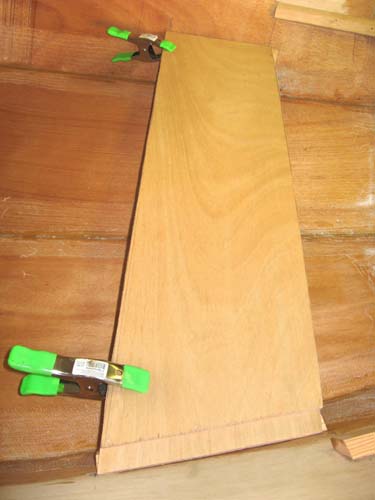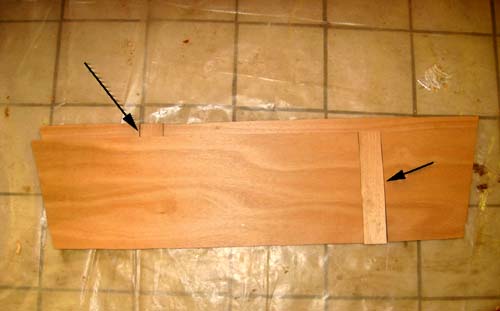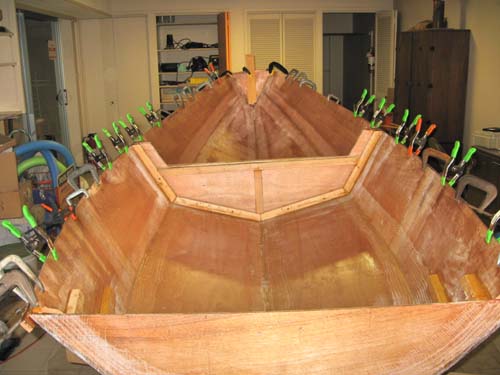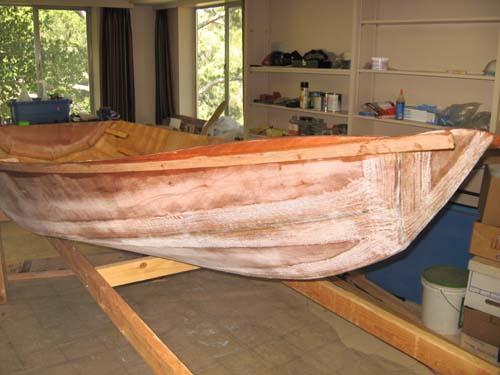Rear Seat, Stiffeners and Gunwales
The FB11 has two positions for the rear seat depending on how it's loaded and configured. I installed the sets of cleats for the two positions and tried the fit of the rear seat, previously cut according the the dimensions in the plans. There was a rather unfortunate difference--the seat was short about an inch in width

The Inch Gap
Fortunately
the seat is made by laminating two 1/4" pieces together. I have learned
a bit at this point about what you can do with plywood and epoxy and it
didn't take long to come up with a splicing solution...

The Splices

The Splices
I
cut the seats and put in two 2" wide strips at opposite ends and glued
the whole thing together. I only fiberglassed the joint on the bottom
side because that's the only place where a tension load will come on
the joint when somebody sits on the seat. The seat also gets stiffeners
on the bottom at the front and back edges. Then I cut the seat to the
actual dimensions. The front seat was also a poor fit. I cut
another one to dimensions as constructed.
The middle bulkheads and rear transom get stiffeners. Cutting and installing them was straightforward.

Stiffeners Installed
The gunwales or rubrails of an FB11 are in two pieces. First a 1" x 1/2" strip is glued flush with the top of the side panel on each side. Then a 1/4" x 3/4" strip is glued on top. It took about all the clamps I owned plus what I could beg, borrow or steal to hold them in place.

Not a Clamp to Spare
The middle bulkheads and rear transom get stiffeners. Cutting and installing them was straightforward.

Stiffeners Installed
The gunwales or rubrails of an FB11 are in two pieces. First a 1" x 1/2" strip is glued flush with the top of the side panel on each side. Then a 1/4" x 3/4" strip is glued on top. It took about all the clamps I owned plus what I could beg, borrow or steal to hold them in place.

Not a Clamp to Spare
Up
near the bow it was not possible to glue the rail on flush with the top
edge to the side panel. At one point it was about 1.5" shy of a flush
fit.

Rail Mismatch

Rail Mismatch
This
was easy enough to fix with a little sawing and work with a rasp plane.
I am wondering if the differences I have encountered are due to the
plans being based on a fir plywood construction, and I have used Okoume
here. There are lots of places to go wrong, transferring dimensions,
cutting etc. But in the end what strikes me is how forgiving this
construction method is.
<previous | home | next>
<previous | home | next>